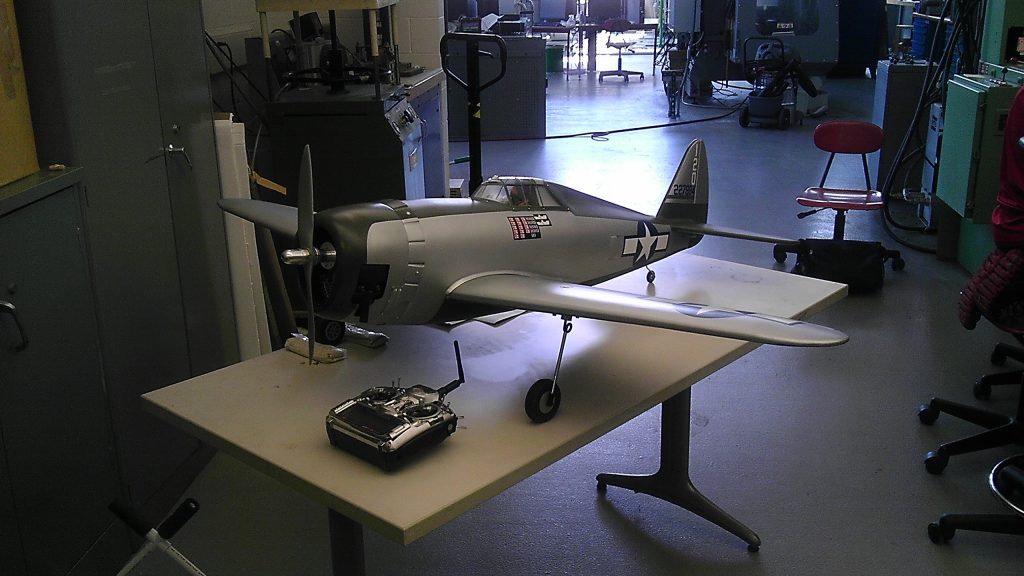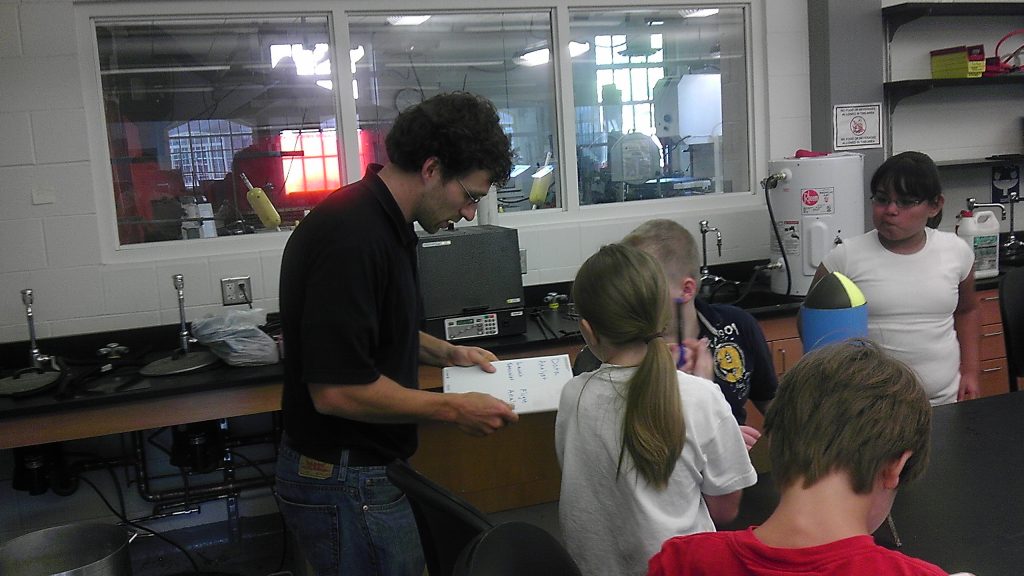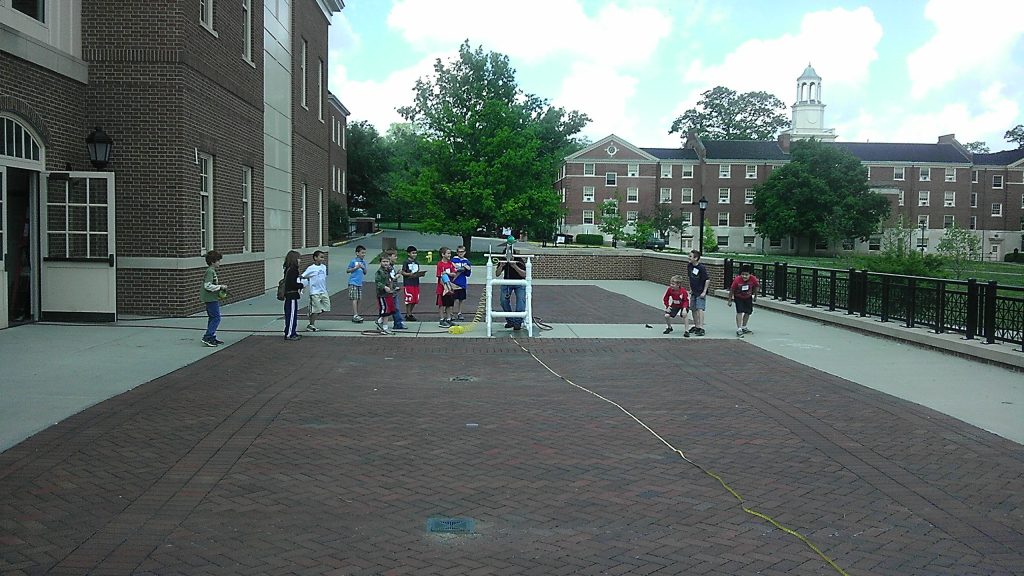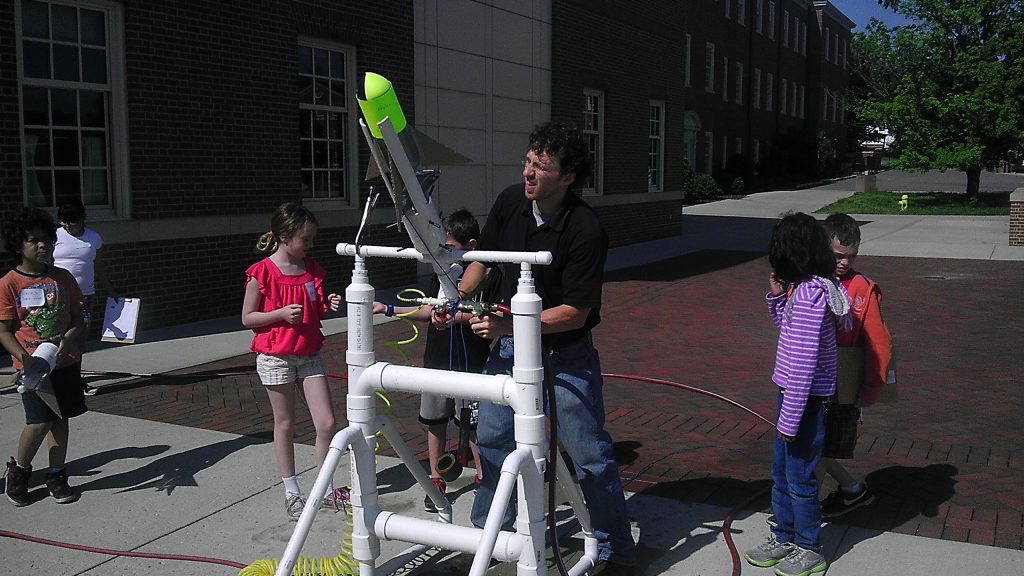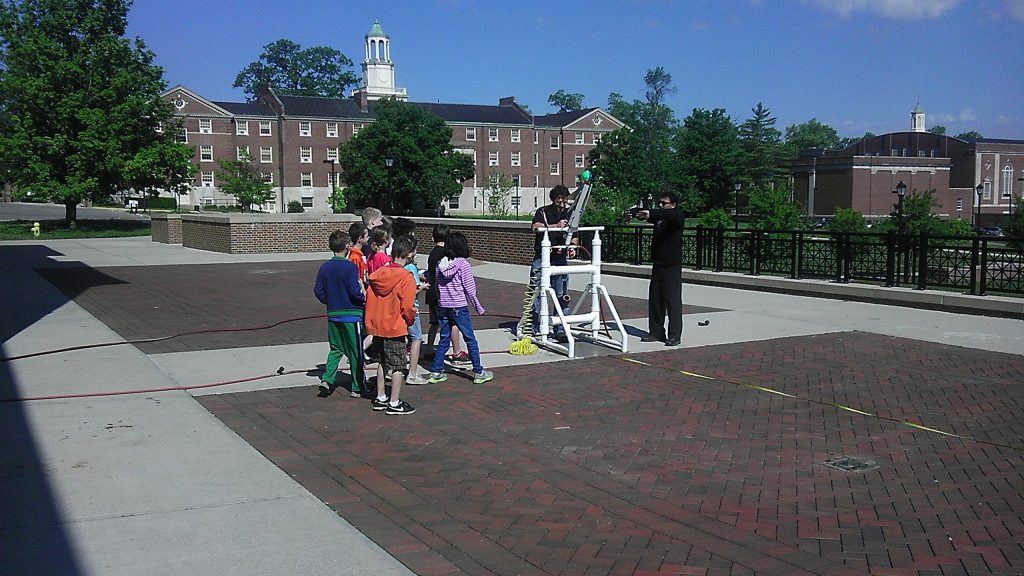Outreach 2012
In this outreach event, the Mechanical Engineering department at Miami University hosted two third grade classes from the local elementary school in Oxford, Ohio. Two outreach activities were set up for the classes: a.) an activity discussing the aerodynamic forces on an airplane, allowing the students to construct models of an airplane and see how they could manipulate the models flight pattern, and b.) using two-liter water propelled rockets, the students were asked to measure the distance the rocket traveled when launched at several different angles with respect to the ground. From the data collected, they were asked to make predictions as to what angle would launch the rocket the farthest. Finally, each group launched their own “custom” rocket at the angle they thought would have a trajectory that would land furthest away from the launch pad based on the data they had collected.
Model Airplane Exploration:
In this portion of the outreach program, Dr. Fazeel Khan brought in his model airplane, and with the help of Dr. Kumar Singh, demonstrated how the control surfaces maneuver the plane through the air.
After this demonstration, the students were asked to construct their own model airplanes.
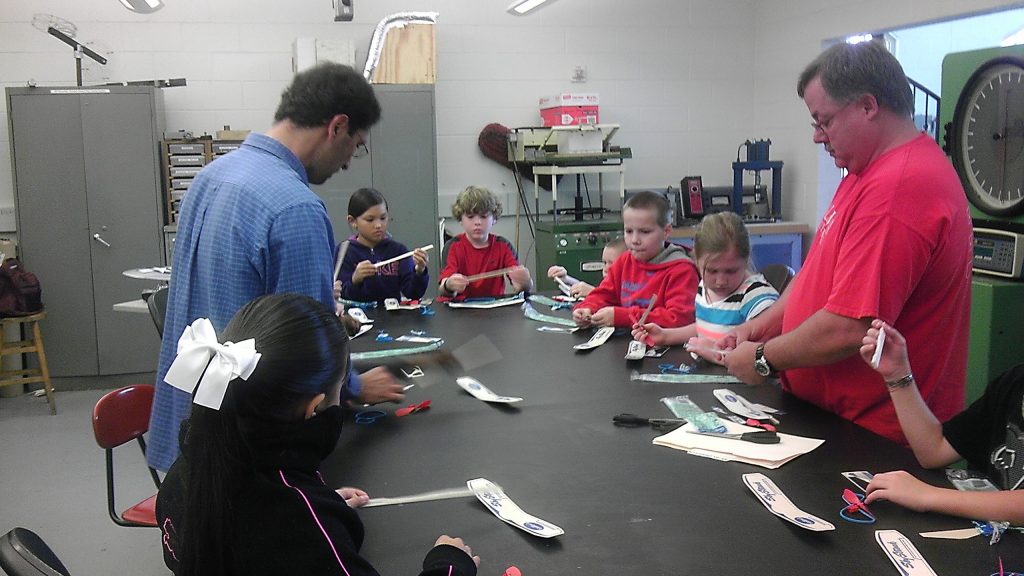
With their models constructed, the students flew their planes off the balcony behind the Engineering building, experiencing how the concepts discussed earlier impact the flight of their own models.
Projectile Motion: Interpretations from Experimental Data of Water Propelled Rockets
For the second portion of the outreach program, the students were broken up into teams of four, each member being assigned one of the following tasks: Mission Control, Data Analyst, Flight Analyst, and Launch Specialist. Each team then customized their own rocket, preparing it for launch.
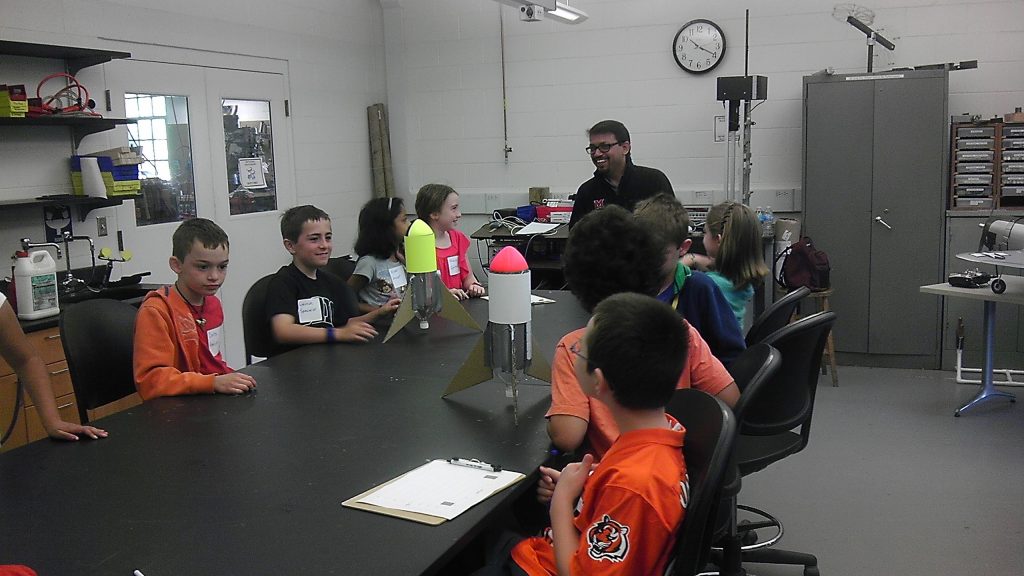
Each team’s Data Analyst was then given a flight chart. On the chart, the angle of launch for the rocket was given on the – axis, and the distance the rocket traveled was given on the y-axis. Some pre-determined data was filled in for the students.
The students were then taken outside to the launch pad. The launch pad was capable of launching a rocket anywhere from 0 to 90 degrees with respect to the ground. A test-rocket was launched at the angles in which data was missing on the given chart. The Flight Analyst’s for each team measured the distance the rocket traveled and reported it back to the Data Analysts.
With their flight charts completed, the groups were then asked to interpret the data they had collected and make an inference from this as to which angle would cause their rocket to travel furthest from the launch pad. Mission Control made the final call on the launch angle, giving a final count down for the Launch Specialist of each team to pull the cable and launch their rocket.

